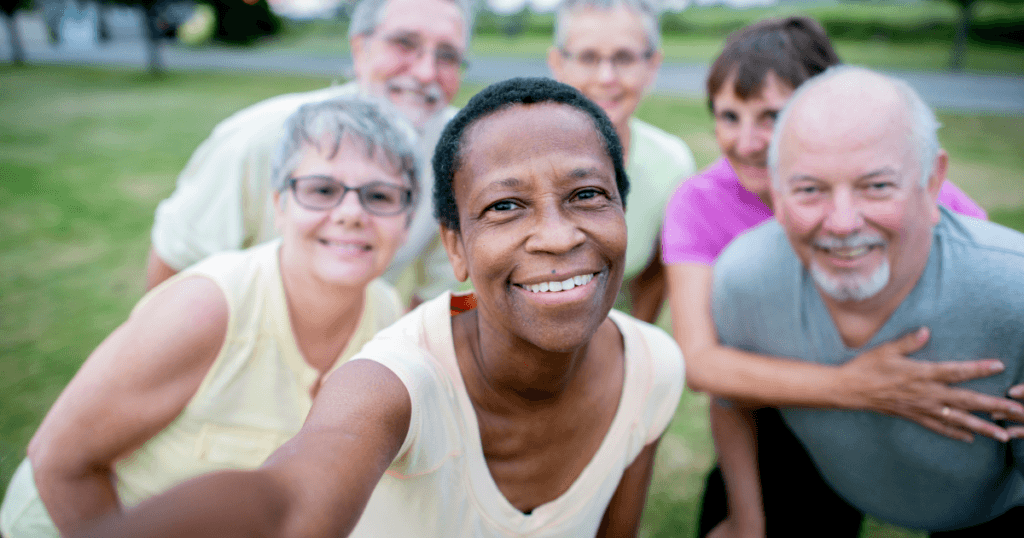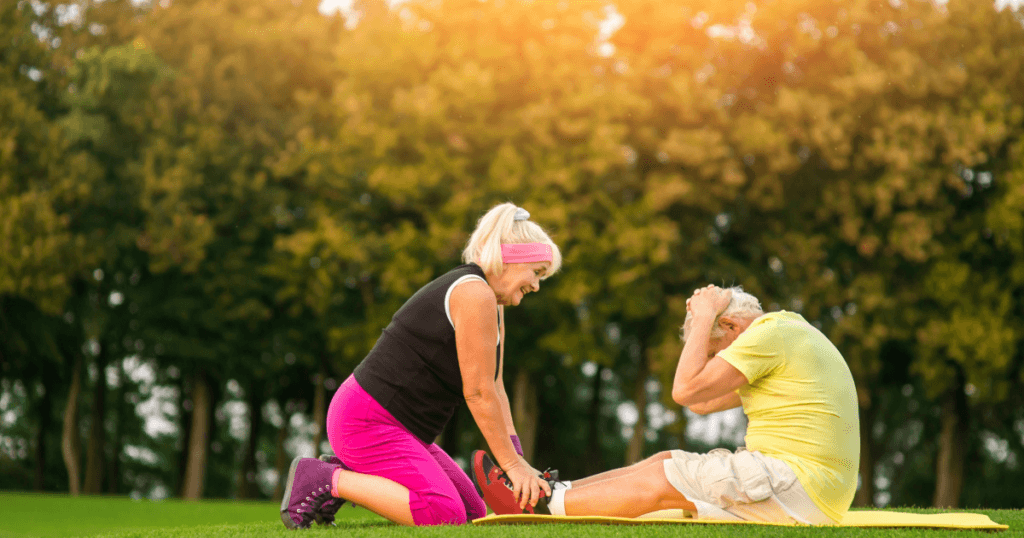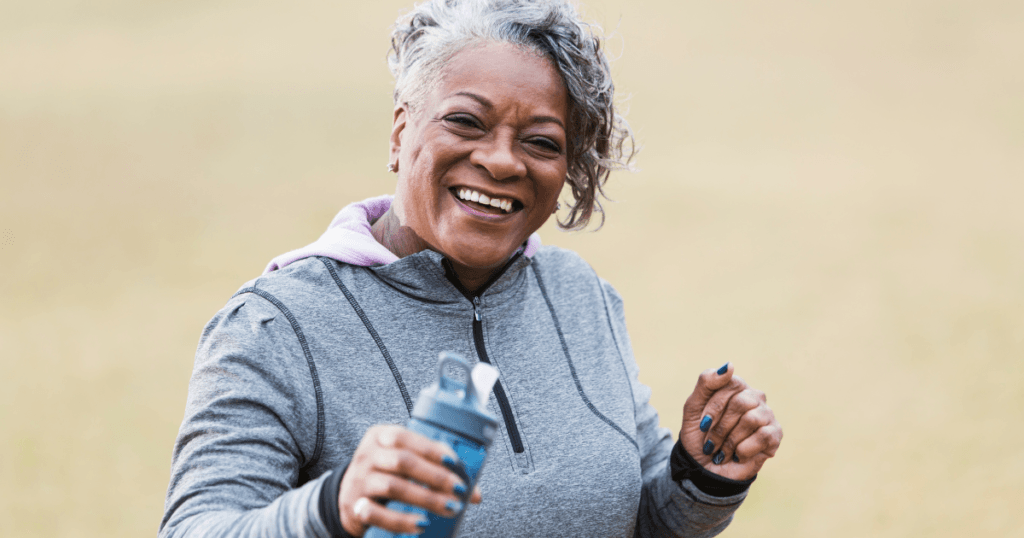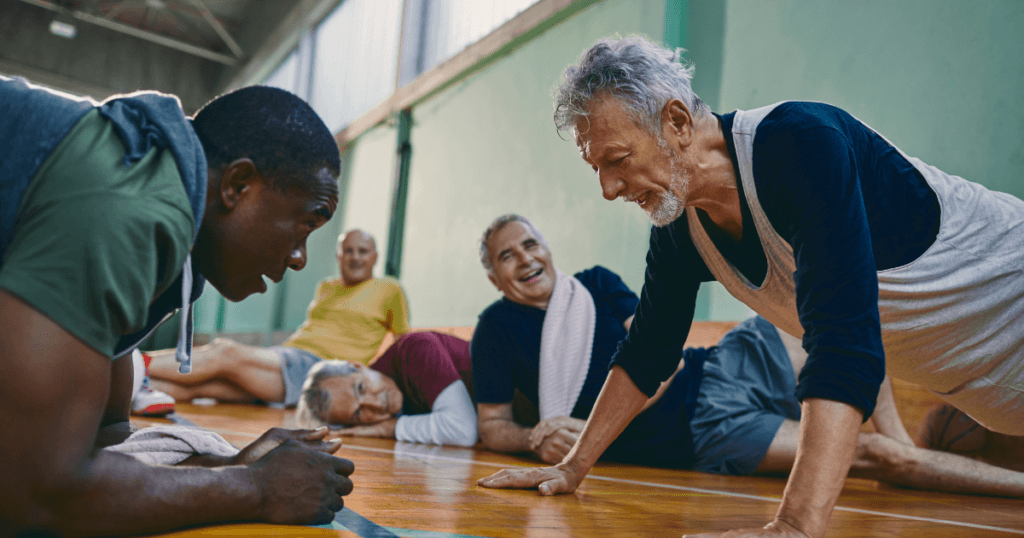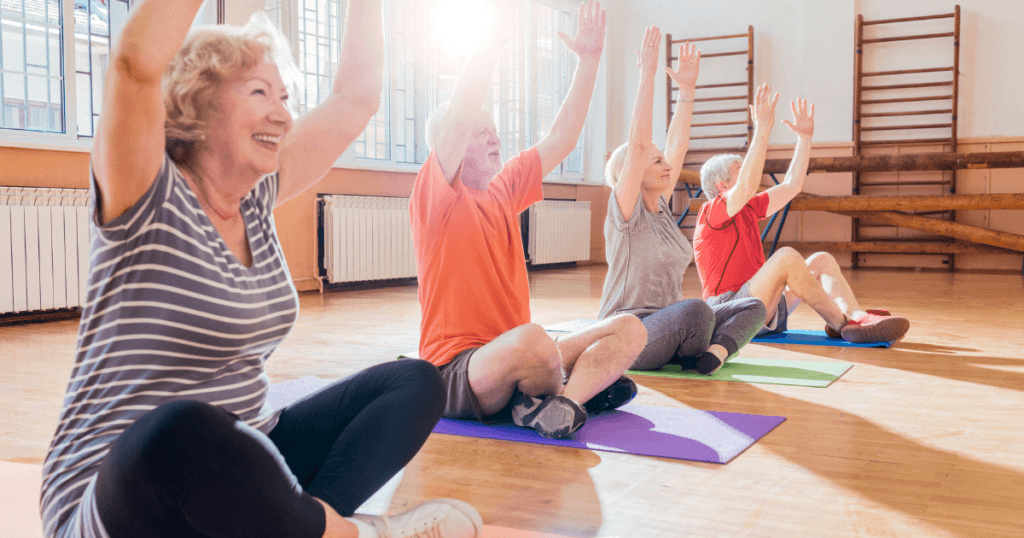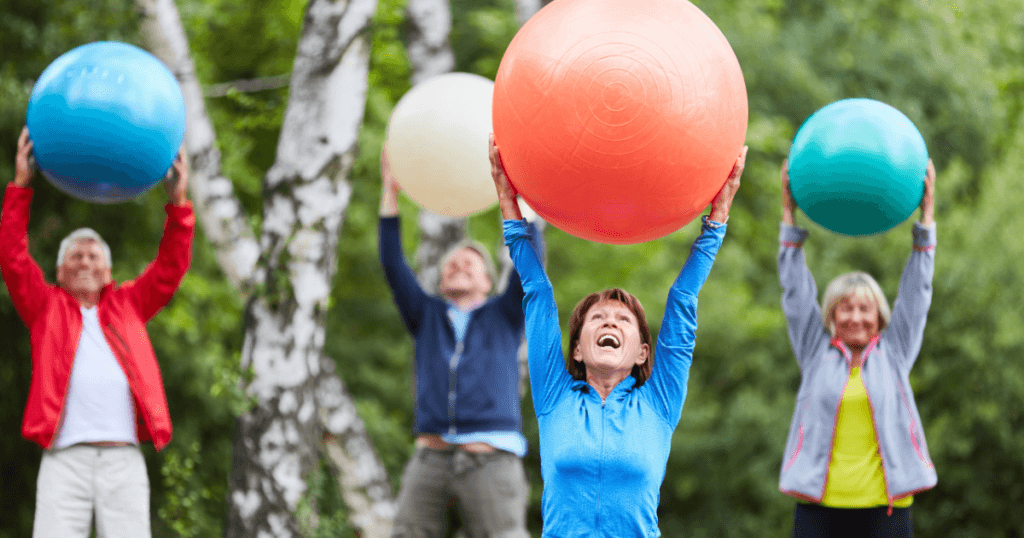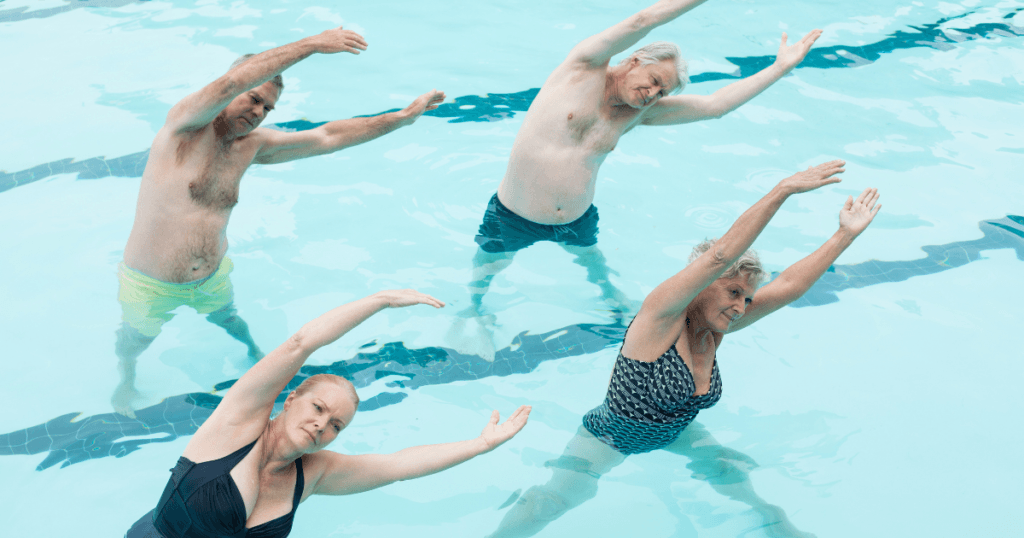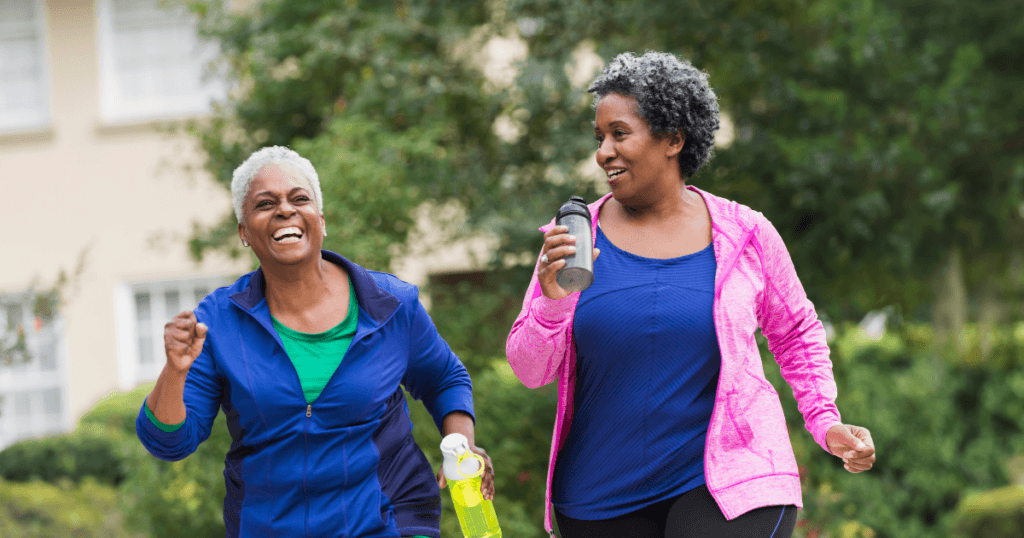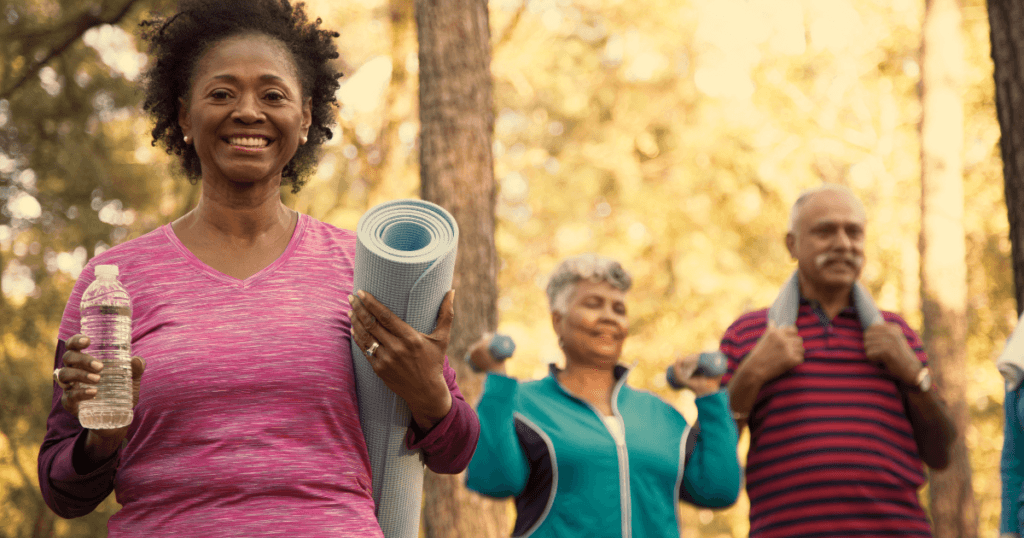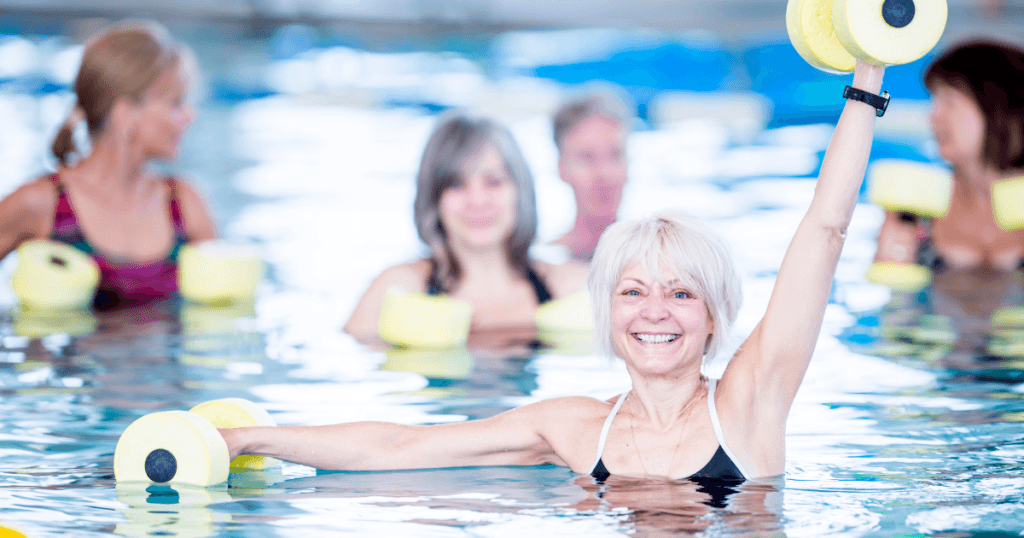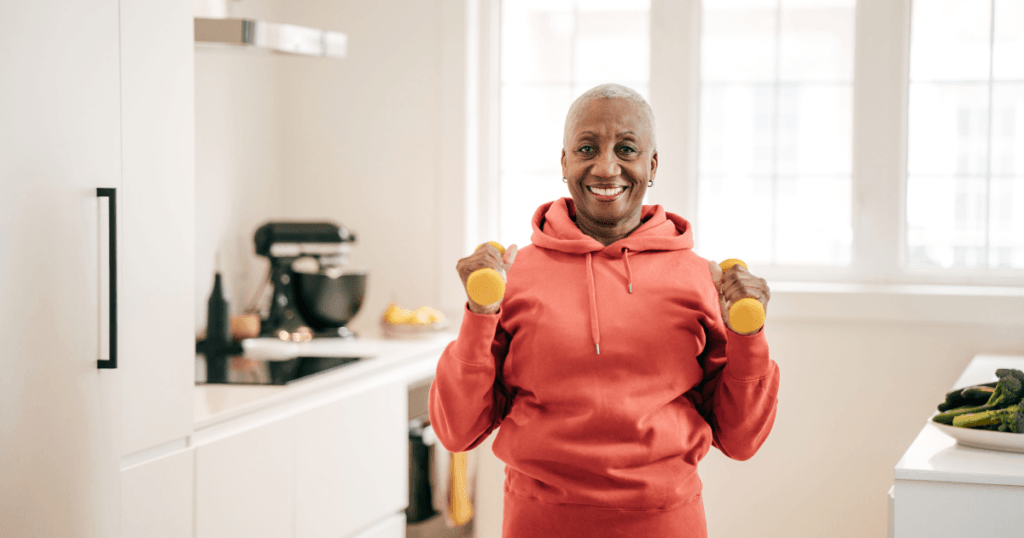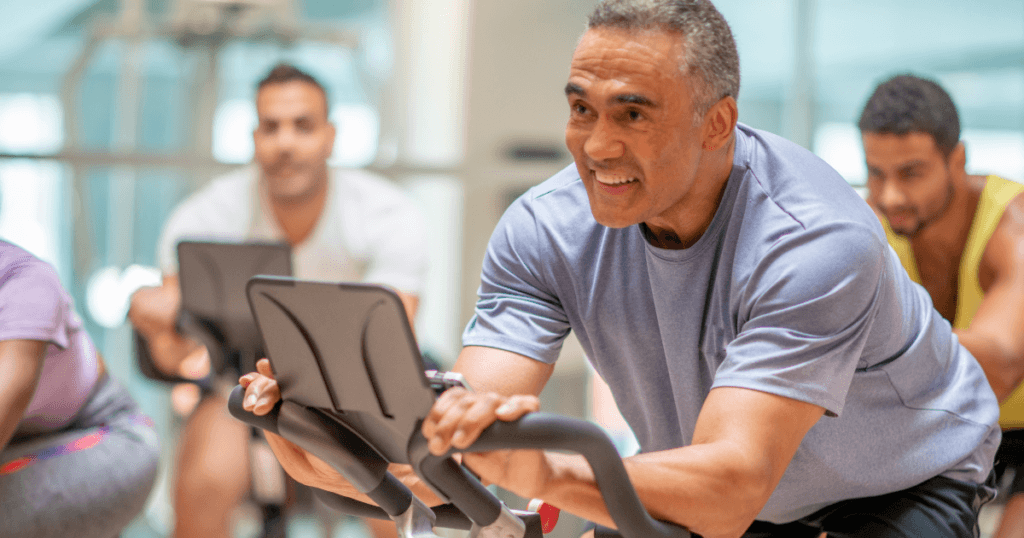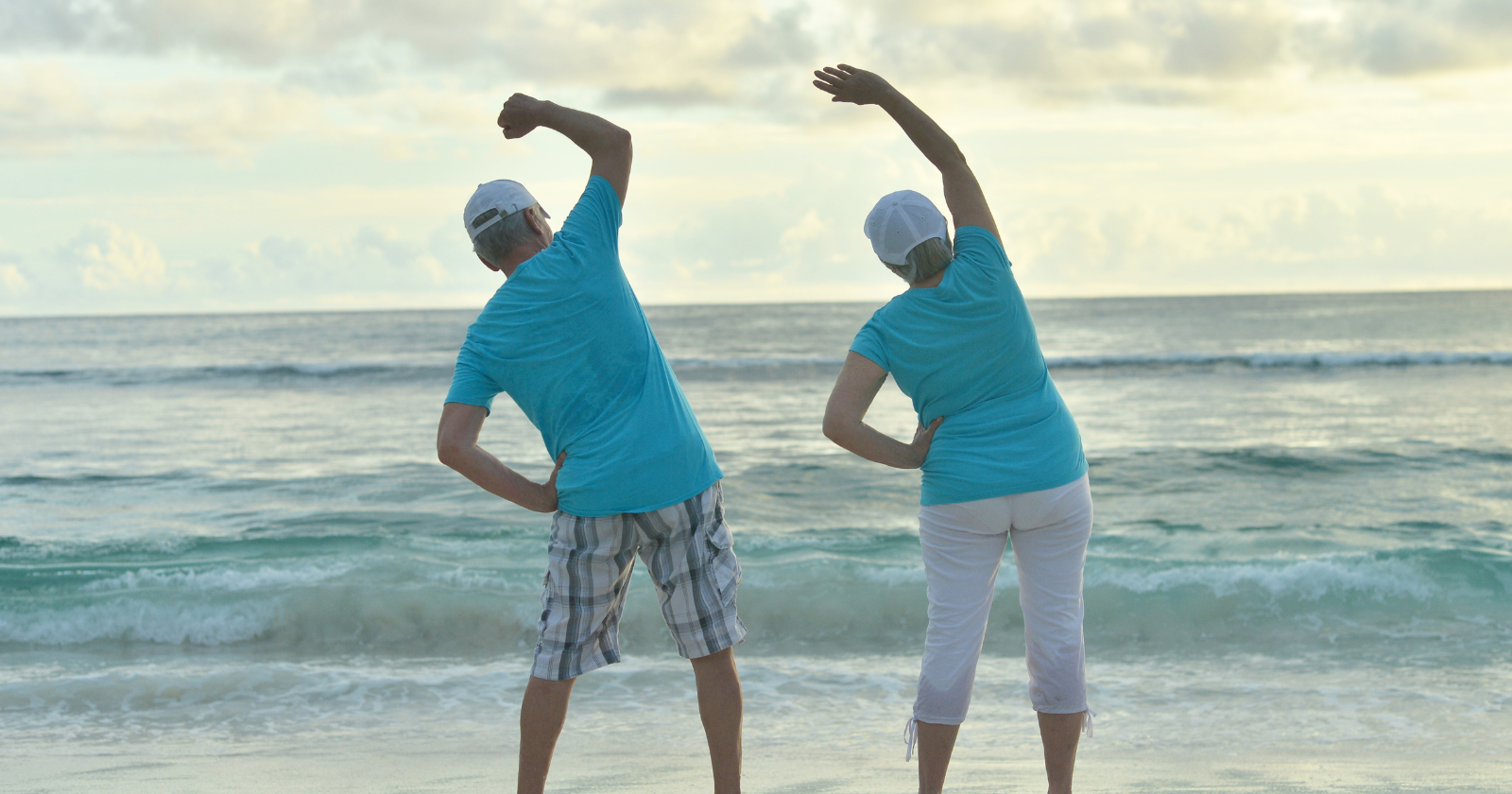As we age, our bodies undergo several changes that might affect our overall health and daily life. One of the most effective ways to combat these changes and maintain our well-being is through regular exercise. In this section, we will discuss the key reasons why seniors should exercise.
First, regular exercise can improve balance and strength in older adults. This helps in reducing the risk of falls and fosters independence by making it easier to perform daily tasks. For instance:
- Walking or jogging helps with balance and flexibility.
- Resistance training can build muscle mass and bone strength.
Another critical reason to exercise as we age is to maintain a healthy weight. Many older adults tend to gain weight due to decreased metabolism and lower activity levels. By engaging in physical activity, like cardio, we can burn calories and manage our weight effectively.
Physical exercise also offers numerous mental health benefits for seniors. Activities such as yoga, tai chi, and meditation can help alleviate stress and anxiety. Meanwhile, aerobic exercises like swimming and cycling can release endorphins – natural mood elevators.
Here’s a quick rundown of how exercise benefits seniors:
- Physical health: improved strength, balance, and weight management
- Mental health: reduced stress, anxiety, and better mood
Moreover, exercise has been shown to help in slowing down the onset of cognitive decline. Research has found that physical activity improves blood flow to the brain, which in turn promotes healthy cognitive functioning. Staying active can help preserve memory and overall brain health as we get older.
Lastly, exercising allows us to stay socially connected. Group activities such as fitness classes, walking groups, or sports clubs offer older adults a chance to interact with others and develop meaningful connections, which contribute significantly to our overall well-being.
The Impact of Exercise on Aging Bodies
Combatting Health Conditions and Chronic Diseases
As we age, our bodies become more susceptible to various health conditions and chronic diseases. Physical activity plays a significant role in reducing the risk of many age-related ailments such as heart disease, diabetes, and arthritis. Let’s break it down a bit further:
- Heart Disease: Engaging in regular exercise can lower blood pressure, improve cholesterol levels, and strengthen the heart muscles.
- Diabetes: Exercise helps regulate blood sugar levels, reducing the risk of Type 2 diabetes and managing it for those who already have it.
- Arthritis: Gentle workouts and stretching can alleviate joint pain and increase range of motion, easing arthritis symptoms.
Improving Mental Health and Cognitive Function
We must not overlook the mental health benefits of exercising. Physical activity has been linked to improved mood, reduced symptoms of depression, and minimized anxiety levels. It also contributes to better cognitive function, which is essential as we age.
Here’s a quick list of mental health improvements we may experience:
- Reduced stress levels
- Better quality of sleep
- Enhanced memory and brain function
- Delayed onset of dementia and Alzheimer’s disease
Enhancing Mobility, Flexibility, and Balance
Our muscles, bones, and joints need regular movement to stay strong and healthy. Exercise can combat osteoporosis by increasing bone density and promoting bone growth. Furthermore, activities such as yoga, tai chi, and Pilates can improve our flexibility, coordination, and balance, reducing the risk of falls and injuries.
Designing an Effective Exercise Routine
When it comes to designing an effective exercise routine for seniors, it’s important to focus on incorporating the 4 types of exercise and setting realistic goals. Let’s dive into the details, shall we?
Incorporating the 4 Types of Exercise
In order to keep our exercise program balanced and safe, we should include the 4 types of exercise: strength training, balance training, aerobic exercise, and stretching. Here’s a breakdown of each type:
- Strength training: This type of exercise is essential to improve muscle mass, which decreases as we age. Some recommended activities include lifting weights, performing bodyweight exercises, or using resistance bands.
- Balance training: Balance exercises help prevent falls and improve our overall stability. Examples of balance activities include tai chi, yoga, and balance-specific exercises like single-leg stands.
- Aerobic exercise: Also known as cardio, aerobic exercise is important for maintaining heart and lung health. Some options for aerobic exercise include walking, cycling, swimming, or taking dance classes.
- Stretching: A good stretching routine helps improve flexibility, which is crucial for maintaining mobility as we age. Incorporating static stretches and dynamic stretches, such as leg swings or chest openers, is a great way to keep our routine balanced.
Setting Realistic Goals and Tracking Progress
To stay motivated and ensure we’re progressing, it’s important to set achievable short-term goals and track our progress. Here are some steps to help us with goal-setting and progress tracking:
- Set short-term goals: Rather than setting long-term goals that can be daunting, let’s focus on smaller milestones that we can achieve more quickly. For example, instead of aiming to lose 30 pounds, we can set a goal of losing 2 pounds per month.
- Create a realistic exercise routine: Based on the types of exercises we discussed earlier, let’s craft a routine that incorporates all four types and is suitable for our current fitness level. If we haven’t been active for a while, starting with 2-3 days of exercise per week and gradually increasing is a good approach.
- Track our progress: Using a fitness tracker, journal, or app, we can monitor our workouts and progress over time. Regularly reviewing this information can help us make adjustments to our routine and stay motivated.
Overcoming Common Barriers to Exercise
Dealing With Limited Mobility and Disability
We understand that limited mobility and disabilities can create barriers to exercise. But don’t worry, there are still ways to get moving and improve your overall health! Here are some tips:
- Adapt: Find alternative exercises that accommodate your abilities, such as chair exercises or water aerobics.
- Start slow: Ease into physical activity, and gradually increase the intensity and duration.
| Disability Type | Suggested Exercises |
|---|---|
| Limited Mobility | Chair Exercises, Water Aerobics |
| Low Vision | Guided Walking, Tandem Biking |
| Hearing Loss | Dancing, Yoga (visual cues) |
Addressing Fears and Myths About Physical Activity
We all have our own fears and misconceptions about exercising, but it’s essential to debunk these myths to be on the path to success.
- Myth: Seniors don’t need to exercise Truth: Everyone can benefit from regular exercise, and seniors are no exception!
- Myth: Exercise can be harmful for seniors Truth: While injuries can happen, exercising smart and starting slow can minimize the risk.
- Myth: People with disabilities can’t exercise Truth: There’s always a way to adapt and modify exercises for disabilities.
- Fear: Fear of injury or worsening an existing condition Solution: Consult a healthcare professional to discuss your concerns and get personalized advice on how to safely exercise.
Practical Tips for Staying Active and Safe
As we age, staying active and incorporating regular exercise into our routines is essential for both our physical and mental well-being. In this section, we’ll share some practical tips on how to stay active and safe while exercising, including choosing the right equipment and apparel, and understanding the importance of warm-ups and cool-downs.
Choosing the Right Equipment and Apparel
Selecting the appropriate equipment and clothing is crucial for safety and comfort during our workouts. Here are some tips to keep in mind:
- Shoes: Invest in high-quality, supportive, and comfortable shoes that are suitable for the specific exercise you’ll be doing. For example, if we plan on walking or jogging, choose a well-fitted pair of running shoes. Replace them every 300-500 miles to ensure proper support.
- Clothing: Wear breathable, moisture-wicking fabrics that help keep you cool and dry during your workouts. Avoid cotton, as it tends to retain sweat and can cause chafing. Dress in layers so you can easily adjust to changing temperatures.
- Exercise equipment: Choose age-specific devices when buying exercise equipment. Consult your doctor, and ask for recommendations based on your fitness level and desired goals. Some popular seniors-friendly exercise equipment includes resistance bands, stability balls, and low-impact cardio machines that are easy on our joints.
Understanding the Importance of Warm-Ups and Cool-Downs
A critical aspect of exercising safely is incorporating warm-ups and cool-downs into our routines. These two elements help prevent injuries, minimize soreness, and optimize the results of our workouts. Here’s what to keep in mind:
- Warm-up: Take at least 5-10 minutes to gradually increase your heart rate and warm up your muscles. Focus on doing low-intensity, dynamic stretching, and cardio exercises. For example:
- March in place
- Walk or jog in place
- Arm circles
- Leg swings
- Shoulder shrugs
- Cool-down: Spend 5-10 minutes gradually decreasing your heart rate at the end of your workout. Focus on static stretching, deep breathing, and gentle movement. Some cool-down exercises include:
- Toe touches
- Standing quad stretch
- Seated hamstring stretch
- Shoulder stretch
- Triceps stretch
Lifestyle Activities for Everyday Fitness
Incorporating fitness into our daily lives doesn’t always have to mean hitting the gym or following a strict workout routine. There are many enjoyable and versatile activities that can help us stay active and healthy.
In this section, we’ll explore some lifestyle activities that are perfect for seniors and can be easily integrated into our everyday lives.
Walking is perhaps the most accessible form of exercise, and it offers numerous benefits for our overall health.
Taking a stroll around the neighborhood, visiting a local park, or joining a walking group are all great ways to incorporate walking into our daily routines.
We can even make it more enjoyable by listening to our favorite music or podcasts while we walk.
Gardening is not only a relaxing hobby but also a fantastic form of exercise.
Whether we’re planting flowers, maintaining the lawn, or growing our own fruits and vegetables, gardening activities engage various muscle groups and provide low-impact exercises.
Plus, spending time in nature has a positive impact on our mental health.
If we love moving to music, dancing can be another fun and social form of exercise.
There are many different dance styles to choose from, such as ballroom, salsa, or line dancing.
We can attend local dance classes, meet new people, and improve our balance and coordination while grooving to the tunes.
For those who prefer water-based activities, swimming is an excellent low-impact option.
It works all the major muscle groups and is gentle on our joints.
Many local pools offer senior-specific swim times or water aerobics classes, which can be a social and enjoyable way to stay fit.
Practicing tai chi or yoga can provide both physical and mental benefits.
These mindful exercises focus on balance, flexibility, and gentle movements, making them perfect for seniors.
Many local community centers or wellness studios offer tai chi or yoga classes specifically tailored for older adults.
Finally, let’s not forget to make the most of our daily life activities.
Simple tasks like taking the stairs instead of elevators, cleaning the house, or playing with our grandchildren can help us stay active, too.
Every bit of movement counts towards our daily fitness goals.
Conclusion
In summary, we strongly believe that engaging in regular physical activity is essential for seniors to maintain a healthy lifestyle. Let’s recap some key points we’ve discussed:
- Improved physical health: Exercise can help reduce the risk of chronic diseases, promote better sleep, and increase muscle and bone strength. It’s essential to choose activities that are suitable for one’s fitness level and health conditions.
- Enhanced mental well-being: Engaging in exercise can help reduce feelings of stress, anxiety, and depression and improve cognitive function. A brisk walk or a simple stretching routine can work wonders for the mind!
- Social benefits: Joining group exercises, classes, or sports clubs can help seniors stay connected with their peers while staying physically active. Interaction and camaraderie are just as important as the actual exercise.
Don’t forget to consult a medical professional before beginning any exercise routine, especially if there are pre-existing conditions or concerns.
Here’s a quick list of excellent exercises for seniors to consider:
- Walking – It is low-impact, easily adaptable, and can be done at a leisurely pace or upped in intensity for a more substantial workout.
- Swimming – Provides a full-body workout while being gentle on the joints, making it ideal for seniors with arthritis or joint pain.
- Yoga – Promotes flexibility and balance, helping prevent falls and maintain overall mobility.
- Resistance training – Helps build and maintain muscle mass, which tends to decrease as we age.
All in all, adding exercise to our daily routine or encouraging our loved ones to do the same can bring a wealth of benefits for seniors. It’s never too late to start an exercise regimen – so, let’s get moving and enjoy a healthier and happier life!
Frequently Asked Questions
What are the top benefits of exercising for people over 70?
We’ve found that the top benefits of exercising for people over 70 include enhanced strength and balance, improved mental capabilities, and reducing the risk of chronic conditions such as heart disease, diabetes, and stroke. Exercise also aids in maintaining overall independence and keeping seniors engaged in social activities.
How does regular physical activity impact seniors’ health?
Regular physical activity positively impacts seniors’ health by improving cardiovascular fitness, boosting bone density, and increasing muscle mass.
It also helps enhance flexibility, balance, and coordination, which can help prevent falls and promote overall mobility.
Furthermore, exercise can improve mental health by reducing stress, enhancing mood, and improving sleep.
What risks should older adults be aware of when starting an exercise program?
When starting an exercise program, older adults should be aware of the risks associated with overexertion, dehydration, and heat-related illnesses.
It’s important to recognize personal limitations, start slow, and listen to one’s body.
Consult with a healthcare professional before starting any exercise program to ensure safety and appropriateness.
What kind of exercise regimen is recommended for those over 75?
For those over 75, we recommend a balanced exercise regimen that includes aerobic, strength, flexibility, and balance activities.
Examples include walking, swimming, yoga, tai chi, and light resistance training.
As always, consult with a healthcare professional to create a tailored and safe exercise plan.
How often is physical activity advised for the elderly?
Physical activity is advised for the elderly at least three to five times per week.
Aim for at least 150 minutes of moderate-intensity aerobic exercise each week, along with strength training exercises twice a week.
Make sure to incorporate balance and flexibility exercises as well.
What consequences might seniors face if they avoid exercise entirely?
If seniors avoid exercise entirely, they may face consequences such as decreased muscle strength and loss of bone density. They may also have an increased risk of chronic conditions, reduced mobility, and impaired cognitive functions. Additionally, lack of exercise may negatively impact mental health and the ability to maintain independence.
